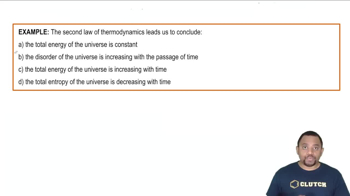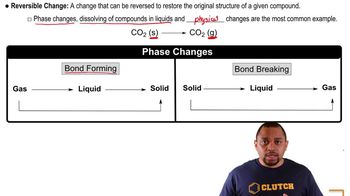Here are the essential concepts you must grasp in order to answer the question correctly.
State Functions
State functions are properties of a system that depend only on its current state, not on the path taken to reach that state. Examples include internal energy, enthalpy, and entropy (ΔS). Understanding that ΔS is a state function means recognizing that its value is determined solely by the initial and final states of the system, regardless of the process involved.
Recommended video:
Entropy and the Second Law of Thermodynamics
The second law of thermodynamics states that the total entropy of an isolated system can never decrease over time. In a reversible process, the entropy of the universe (system plus surroundings) increases, indicating that while the system may return to its original state, the overall disorder or randomness increases, reflecting the natural tendency towards equilibrium.
Recommended video:
Second Law of Thermodynamics Example
Reversible Processes
A reversible process is an idealized process that occurs infinitely slowly, allowing the system to remain in equilibrium at all times. In such processes, the change in entropy of the system is equal in magnitude but opposite in sign to the change in entropy of the surroundings, leading to no net change in the total entropy of the universe. However, this does not imply that the entropy change of the system is zero.
Recommended video:
Reversible Changes in Matter




